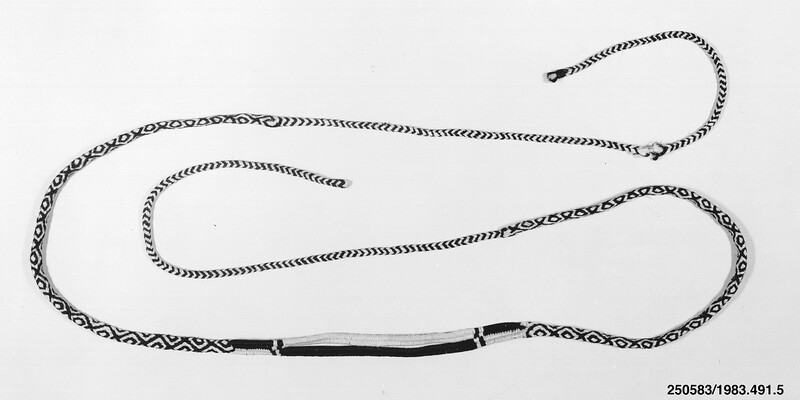Incan Slingshot
As the Inca Empire grew its boundaries well throughout the Andes region, they surmounted large sums of wealth. The Incas collected large deposits of gold, created large food storages, and offered valuable gifts to gods during religious ceremonies. While the Incan stockpiles of wealth continued to grow, outside interest from others increased. However, Incan resources would not be had easily. The Incan empire was composed of extensively trained soldiers, well equipped for hand to hand combat, as well as other longer range combat methods. Their armour was made with thick skins and hide, and they organized themselves according to which weapon they carried. The weapon shown, a slingshot from the 15th-18th century, shows the progression of Incan combat and weapons, as they began to expand from short range methods of fighting to longer range options. The slingshot is constructed from camelid hair, is well woven, and could be used to propel stones or other heavy objects. The slingshot represents the craftsmanship of the Incas, and represents how spiritual war was for the Incas. Before battles, the Inca would fast before preparing feasts. Many Incan soldiers crafted their own weapons, and each soldier had been raised to be strong. However, they still lacked horses, did not have metal armour, and found themselves outmatched by Spanish swords and guns. When the Spanish arrived at the Inca empire, the Inca were unwilling to come to terms with giving up their capital of Cuzco, and they were left with no choice but to fight against the roughly 150 Spanish Conquistadors that wished to take their rich deposits of gold and materials. Despite the Incas having the advantage of familiarity with high elevations and tough, mountainous terrain, their large empire, even with a centralized military, was defeated by a small crowd of powerful Spanish.

